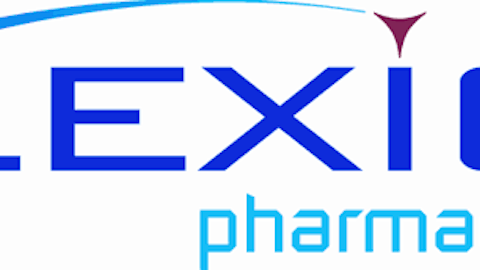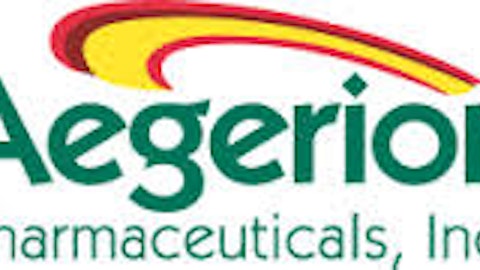“Making every patient count” is a catchy phrase that is perhaps most meaningful for biotech companies like NPS Pharmaceuticals, Inc. (NASDAQ:NPSP) who are in the business of developing orphan drugs. The simple reason – they cannot afford to lose a single patient just because there aren’t too many of them. Their whole business is centered around producing drugs for rare diseases that bigger pharma often does not address, and in this way they perform an important role in the industry.

Orphan drug
An orphan drug needs to pass through the same regulatory process as any other drug candidate seeking approval from the FDA. However, certain statistical burdens are lessened because of the rarity of the disease for the simple reason that there may not be adequate number of patients available and it may not be possible to test as many in Phase III clinical trials as stipulated by FDA rules for non-orphan drugs. The Orphan Drug Act of 1983 was meant to encourage biotech companies to develop drugs for rare diseases for the reason that the limited scope makes it an unprofitable venture. Under the law, a company developing a drug for which there are less than 200,000 patients in the U.S. gets a tax incentive, enhanced patent protection and financial subsidy on clinical research.
One would think that with all these encouragements/subsidies, it would be cheaper to treat a rare disease. Let us see and be prepared for a surprise!
NPS Pharmaceuticals, Inc. (NASDAQ:NPSP)
I have selected NPS Pharmaceuticals, Inc. (NASDAQ:NPSP) as a test case because it is a clinical stage biopharmaceutical company that has recently launched an orphan drug. The company focuses on rare gastrointestinal and endocrinal disorders that have unmet medical needs. It has recently made a public offering of 6 million shares at $14.53 a share to raise $87.2 million.
Gattex (teduglutide [rDNA origin]), for adult parenteral dependent short bowel syndrome (SBS), approved in December 2012, is the company’s first FDA approved drug. In Europe the drug was approved in September 2012 and marketed as Revestive. The company’s other major candidate, Natpara (recombinant human parathyroid hormone), for hypoparathyroidism is in late stage (Phase III) clinical testing.
Teduglutide is also being tested for Crohn’s Disease (Phase II) and pediatric SBS (preclinical stage). The company has two more candidates in preclinical stage.
Short bowel syndrome is a rare condition in which a person is either born missing a large part of intestines or has had them removed surgically, which makes it difficult for the body to properly absorb nutrients (malabsorption). It is classified as a rare disease as there are less than 5,000 SBS patients in the U.S.
This is where the “every patient counts” byword comes into play. However, orphan drug companies usually make their money with pricing strategies, which are again subsidized for patients through federal assistance for rare disease patients.
Gattex pricing
Over the last two years, much before the FDA approval and launch of Gattex, NPS Pharmaceuticals, Inc. (NASDAQ:NPSP) has been nurturing its relationship with one Mr. Jablonski whose Short Bowel Syndrome Foundation has a social network of 1,000 SBS patients and caregivers. The sole reason – how to promote Gattex within his network. While the Short Bowel Syndrome Foundation is a not-for-profit organization, the company’s motives are not.
Gattex has been priced at an annual cost of $295,000 per patient and the company expects huge revenues from the drug, which is not only its first but also its only offering in the market as yet.
It is not as if that the cost of developing Gattex was extremely high. According to NPS Pharmaceuticals, Inc. (NASDAQ:NPSP)’s CEO, it cost the company $250 million to develop Gattex, which, going by industry standards is pretty low. It costs $1 billion or more before a drug gets approved. However, the pricing, as per the CEO, was done not on the basis of cost of bringing the drug to the patient but on its perceived value to patients – on the basis of its medical value, direct and indirect cost of other treatments for SBS and improvement in quality of life of patients. And most importantly, the “orphan drug premium”– the company found that there may actually be fewer SBS patients (3,000) than expected (5,000).
It is not as if Gattex is alone out there. It is actually the fourth drug with a price above $200,000 to be approved in 2012. As a medical practitioner or a patient, one might not like the pricing – as an investor and shareholder, one certainly would not mind the profit.
Without going into the debate whether such high prices are justified or not, the crux of the matter is orphan drugs developed for orphan diseases are replacing the blockbuster drugs of prior years. They have the potential of providing lifetime revenues just the way drugs for common ailments and serious medical conditions did in yesteryears. Ultimately, the equation comes to price multiplied by number of prescriptions – if you are forced to decrease the latter (fewer patients) you simply increase the former and keep your bottomline intact. The one difference in this case – development cost; this is where NPS Pharmaceuticals, Inc. (NASDAQ:NPSP) really wins out.
In addition, government incentives and relaxed rules for clinical trials and approvals as envisaged by the Orphan Drug Act make development of orphan drugs a viable economic proposition. In fact, according to research conducted by Thomas Reuters in conjunction with Pfizer Inc. (NYSE:PFE), orphan drugs have a higher compounded annual growth rate as compared to non-orphan drugs. Pfizer Inc. (NYSE:PFE) initiated a rare disease segment in 2010 and Sanofi acquired one of the pioneers of orphan drug industry, Genzyme Corporation, in 2011.
How does anyone pay for such an expensive treatment?
Drugs like Gattex are known as ultra-orphan drugs in the industry and they are not paid for the way other medications are. Despite the high cost, American patients will not have to pay much. The company will pay any out-of-pocket expenses that privately insured patients may have to pay. Out-of-pocket expenses of those insured with Medicaid and Medicare will be paid by nonprofit organizations like Mr. Jablonski’s Short Bowel Syndrome Foundation, which receive funding from NPS Pharmaceuticals, Inc. (NASDAQ:NPSP). For those who are uninsured, the company will cover the full cost of Gattex.
Financials and the Peer Market
NPS Pharmaceuticals had almost folded up after its earlier drug for osteoporosis failed to get FDA approval. The company has since turned to discovery and development of orphan drugs.
Q1 2013 revenue was $25.4 million, about $2 million less than what the Street expected but loss per share (-$0.09) was less by $0.04 than consensus estimate.
However, with companies like NPS, future growth prospects matter more than current figures. A classic example is the super success of Alexion Pharmaceuticals, Inc. (NASDAQ:ALXN), which became the star of the orphan drug industry on developing Soliris for treatment of rare disorders, Hemolytic-uremic syndrome and Paroxysmal nocturnal hemoglobinuria (PNH). This is now a $20 billion market cap drug company with a drug that has an annual sale value of a few billion dollars.
Another big story in the orphan drug industry was Genzyme, which was acquired by Sanofi SA (ADR) (NYSE:SNY) in 2011 for the staggering sum of $20.1 billion. Genzyme used to be the largest player in the orphan drug industry, earning many accolades from the industry and creating a number of important drugs:
| Drug | Disease |
| Cerezyme | Gaucher disease |
| Renagel | Dialysis |
| Fabrazyme | Fabry’s disease |
Today, after the successful acquisition, Genzyme has spread out to dozens of countries worldwide, and is a major success story in the orphan drug industry.
Summary
Coming back to my original train of thought, Gattex allows patients of SBS to reduce their dependence on intravenous feeding for survival, which on its own costs more than $100,000 a year. At the same time, it improves the quality of life of the patient to a great extent.
NPS Pharmaceuticals is partnering with infusion companies to identify patients and working with nonprofit foundations to promote Gattex. The drug is likely to succeed as there is no direct competition to Gattex. If it succeeds it has the potential of bringing in revenues of $350 million a year.
Moreover, the company’s other drug Natpara is also a first-in class drug and does not have any direct competitor. It is another candidate for another disease and if approved has the potential of taking NPS Pharmaceuticals to the next level.
The article The Profitable Business of Developing Orphan Drugs originally appeared on Fool.com.
Dr. Kanak Kanti De has no position in any stocks mentioned. The Motley Fool has no position in any of the stocks mentioned. Kanak is a member of The Motley Fool Blog Network — entries represent the personal opinion of the blogger and are not formally edited.
Copyright © 1995 – 2013 The Motley Fool, LLC. All rights reserved. The Motley Fool has a disclosure policy.



